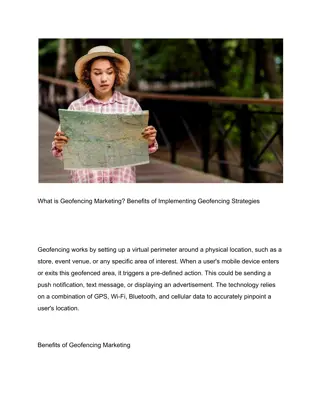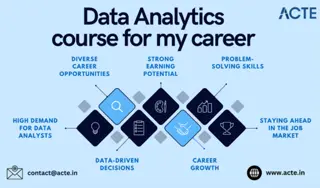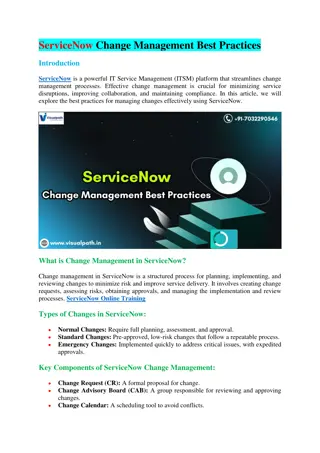
Female Leadership Behaviours: Understanding the Role of Effective Leaders
Explore the essential aspects of female leadership behaviors and traits in this comprehensive course. Learn how to maximize team performance, develop self-awareness, and enhance leadership skills for a successful career. Discover the key components that drive successful female leaders forward and adapt to various situations to excel in leadership roles.
Download Presentation

Please find below an Image/Link to download the presentation.
The content on the website is provided AS IS for your information and personal use only. It may not be sold, licensed, or shared on other websites without obtaining consent from the author. If you encounter any issues during the download, it is possible that the publisher has removed the file from their server.
You are allowed to download the files provided on this website for personal or commercial use, subject to the condition that they are used lawfully. All files are the property of their respective owners.
The content on the website is provided AS IS for your information and personal use only. It may not be sold, licensed, or shared on other websites without obtaining consent from the author.
E N D
Presentation Transcript
wideproject.eu Module 2. Female Entrepreneurship Course 2: Women Leadership Partner: ADDE "The European Commission support for the production of this publication does not constitute endorsement of the contents which reflects the views only of the authors, and the Commission cannot be held responsible for any use which may be made of the information contained therein."
Objectives & Goals At the end of this course you will be able to: Acquire basic knowledge on leadership You will learn how to underpin your leadership style and understand why you are driven to behave the way you do. You will identify the leadership behaviours. Enhance competences in maximizing performance of your team You will consider the many elements of performance management that an effective female leader needs to think of, applying techniques in order to make your goals manageable Access online resources regarding self- development You will know what resources are useful to you "The European Commission support for the production of this publication does not constitute endorsement of the contents which reflects the views only of the authors, and the Commission cannot be held responsible for any use which may be made of the information contained therein."
Index WomenLeadership In this course we will consider the many elements of performance management that an effective female leader needs to think of and we will present some ways of self- development in order to stay motivated and become a better leader. We will explore how it can positively impact your organization s performance. You will learn how to underpin your leadership style and understand why you are driven to behave the way you do. Unit 1: Leadership Behaviours: The Role of Female Leaders Section 1: Behavioural Overview Section 2: Behaviours hold the Key Section 3: Variety is the secret ingredient of female leadership Unit 2: Leadership in practice: Maximizing Performance of Your Team Section 1: Motivation: The Engine of Female Leadership Section 2: Setting clear objectives and Strengthening Goals Section 3: When things don t happen Unit 3: Continuous Development Section 1: Self- Development Section 2: Development Opportunities Section 3: Useful Resources "The European Commission support for the production of this publication does not constitute endorsement of the contents which reflects the views only of the authors, and the Commission cannot be held responsible for any use which may be made of the information contained therein."
Unit 1: Leadership Behaviours: The Role of Female Leaders Section 1: Behavioural Overview 1.1.1. What is leadership? Leadership is the ability to persuade others to follow you, to inspire them to perform at the highest level, and to make them understand and believe in your vision. 1.1.2. Behind every excellent female leader there is a highly constantly changing elements. These include aspects such as: Your personality traits or predispositions Your personal values or beliefs Your behavioral strengths and weaknesses Your prime motivators or drivers Your knowledge and skills sets Your experience and capabilities 1.1.3. Your personality traits Modern psychology attempts to describe personality based on what are referred to as the 'big five traits: 1.1.4. Adapting to the situation Excellent adapt Understanding your profile allows you to consciously utilize appropriate behaviors for given situations even if these behaviors are contrary to what you know to be your preferred way of behaving. 1.1.5. Questions to ask yourself In what situations do my traits help to deliver positive outcomes? In what situations traits likely to be unhelpful? In what situations do I need to consider adapting my behaviors? female leaders can Extravert Introvert complex mix of personality and Agreeable Disagreeable Conscientious Carefree Open Closed are my Emotionally controlled Emotionally free "The European Commission support for the production of this publication does not constitute endorsement of the contents which reflects the views only of the authors, and the Commission cannot be held responsible for any use which may be made of the information contained therein."
Unit 1: Leadership Behaviours: The Role of Female Leaders Section 2: Behaviours Hold the Key 1.2.1 Typical Behaviours Behaviors may be grouped into 4 main themes. 1.2.2. Thinking Behaviours Analytical Thinking Conceptual Thinking Strategic Thinking Client- oriented Thinking 1.2.3. Delivering results Behaviors Focus on achievement Attention to detail Tenacity Concern for excellence 1.2.4. Relationships Behaviors Interpersonal Awareness Adaptive Behavior. Stakeholder Relationships Influencing/ Persuading 1.2.5. Self- Management Behaviors Resilience Self- development Self- Control Self- Confidence Female leaders who are successful behaviours that can support and achieve exceptional results even when their natural traits do not necessarily match the activity required. very develop Thinking Delivery ANALYTICAL THINKING STRATEGIC THINKING CONCEPTUAL THINKING CLIENT-ORIENTED THINKING FOCUS ON ACHIEVEMENT ATTENTION TO DETAIL TENACITY CONCERN FOR EXCELLENCE Relationships Self- management INTERPERSONAL AWARENESS ADAPTIVE BEHAVIOR STAKEHOLDER RELATIONSHIP INFLUENCING/ PERSUADING RESILIENCE SELF- DEVELOPMENT SELF- CONTROL SELF- CONFIDENCE "The European Commission support for the production of this publication does not constitute endorsement of the contents which reflects the views only of the authors, and the Commission cannot be held responsible for any use which may be made of the information contained therein."
Unit 1: Leadership Behaviours: The Role of Female Leaders Section 3: Variety is the secret ingredient of female leadership 1.3.1. Flexibility is the key It's essential that you remain flexible to be able to respond to situations as they develop. 1.3.2. Keep an Open Mind You should keep an open mind to a wide range of different approaches especially those you have not tried before. 1.3.3. Your Options Even if a leadership technique or behavior is not one that comes naturally, you still have a number of options: Persevere to develop the behavior over time Understand that this is not your strength and use alternative approaches Manage the problem by using someone else who you consider as having this strength 1.3.4. Learning from bad Examples Think of someone in your community who was not very successful, and maybe it is a good idea to ask them about their leadership style! Learn from their mistakes! 1.3.5. Don t copy! It is important that you draw lessons from real- life examples instead of just try to copy them directly! Leadership to understand processes involved. In the real world there are normally very many variables impact your choice of approach: models can be useful in the underlying helping that will all Your personality, motivations and skill-base The nature of the issue being addressed Previous interactions member of your team/ family (in case of small family businesses) you've had with each "The European Commission support for the production of this publication does not constitute endorsement of the contents which reflects the views only of the authors, and the Commission cannot be held responsible for any use which may be made of the information contained therein."
Unit 2: Leadership in Practice: Maximizing Performance of Your Team Section 2: Setting clear objectives and Strengthening Goals Section 1: Motivation: The Engine of Female Leadership 2.2.1. SMART model 2.1.2. Motivators are different Your job, as a leader is to find out and understand ( not guess) what motivates your team members and specifically the key into these motivations in order to energize and get the very best from them. Here are 5 ways to motivate you team: Discover what passions your people have Promote emotional security Create an environment of support and friendship Show your appreciation Take into account the environment SPECIFIC Describe to me the detail of what it will look like when you complete this objective MEASURABLE How will you know when you have achieved this objective? What simple measures can you set in place to keep a track of your progress? ACHIEVABLE On a scale of 1- 10 how confident are you that you can achieve this goal? RELEVANT How do you see this complementing or supporting your other work activities? TIMED What is a realistic timescale to achieve this based on your workload and the needs of this piece of work? Specific Measurable Achievable Relevant Timed "The European Commission support for the production of this publication does not constitute endorsement of the contents which reflects the views only of the authors, and the Commission cannot be held responsible for any use which may be made of the information contained therein."
Unit 2: Leadership in Practice: Maximizing Performance of Your Team Section 2: Setting clear objectives and Strengthening Goals 2.2.2. Making Goals Manageable It is normally beneficial to set goals with a degree of challenge, but it is also important not to set goals objectives or goals that are too challenging. If a goal seems unattainable, you run the risk of the individual giving up or not even trying for fear of failure. Break it down! One of the best ways of making a goal more manageable is to break it down into smaller sub- goals. Before you do this, take a step back and let the individual or team decide if it is too big. 2.2.3. Strengthening Goals Using SMART to remind you of the key elements of an effective goal is fine, but in reality this only goes a small way towards setting in place and enduring and energizing goal. Encourage your team to bring their end goal to life by asking them to visualize and describe to you what it will be like when they have successfully achieved their goal. "The European Commission support for the production of this publication does not constitute endorsement of the contents which reflects the views only of the authors, and the Commission cannot be held responsible for any use which may be made of the information contained therein."
Unit 2: Leadership in Practice: Maximizing Performance of Your Team Section 3: When things don t happen 2.3.1.CAN T DO VS. WON T DO When an objective has not been met, you have to determine if the reason the individual didn t achieve their objective is because they couldn t do it or they could do it, but wouldn t do it. 2.3.2. Maintaining focus An important role of a female leader is to help team members to stay on track and totally focused on the things that matter. There are various reasons why people can lose focus: If they are very enthusiastic, they tend to take on more than they can realistically handle They are so deeply involved in the task in hand that they lose sight of the bigger picture. If a task or a project is long- lasting, they may start to lose sight of the initial goal They are faced with a number of new competing priorities all appearing to be of equal importance Here are some example questions to ask to help maintain an individual s focus: Can you describe to me the end goal we initially agreed? On a 1- 10 scale , how focused are you right now? How can you improve your overall level of focus? How relevant is what you are doing to the overall objectives? Are there any of the things you are doing now that don t directly contribute to the end objective? What could you realistically drop so that you can focus more on the most important priorities? "The European Commission support for the production of this publication does not constitute endorsement of the contents which reflects the views only of the authors, and the Commission cannot be held responsible for any use which may be made of the information contained therein."
Unit 3: Continuous development Section 1: Self- development As well as being a management process, self-development is also a critical leadership behavior. 3.1.1. Keeping up to date Beside developing your leadership skills and behaviors, it is important to keep up to date your knowledge affecting the sector in which you work and even broader global issues. This could be a matter of reading relevant press and media articles or it may require a form of more structured learning, such as attending specific courses or training. 3.1.2. Have Honest Conversations with Your Inner Self We suggest you should do this in your head instead of out loud! It can be a quite useful technique to help focus your mind. Whatever the reason for your internal dialogue, it's important that this is kept positive 3.1.3. Self- coaching Using someone else as a coach isn't always possible - you may not be in a position to engage a coach at the time or it's just that your coach isn't available for you at a critical time. "The European Commission support for the production of this publication does not constitute endorsement of the contents which reflects the views only of the authors, and the Commission cannot be held responsible for any use which may be made of the information contained therein."
Unit 3: Continuous development Section 2: Development Opportunities 3.2.1. Discover Yourself Every time you are faced with a situation, whether it's a meeting, the analysis of some data or even just replying to emails, you will be making decisions approach. Become aware thought processes you make, the actions you take and, if possible, which behaviors play in support of your activities. Be hungry to take on new knowledge, competences responsibilities. Keep your mind active and stimulated by constantly seeking new challenges. 3.2.2. Encourage Feedback! Encourage those that work with you ( employees, clients, family members, stakeholders) to feedback on your performance leader. Accepting constructive criticism, whether positive or negative, can only help build a positive climate of trust and openness with those in your team. 3.2.3. Keep a Development Log When development opportunities are very explicit, in the form of courses or workshops, it is easy to recognize the outcome of that experience. This is not the case of less formal experiences. Considering how much learning occurs in these less formal important to record their impact on your overall development goal. give you honest as a over your of the situations, it is you bring into or "The European Commission support for the production of this publication does not constitute endorsement of the contents which reflects the views only of the authors, and the Commission cannot be held responsible for any use which may be made of the information contained therein."
Unit 3: Continuous development Section 3: Useful Resources 3.3.1. Personality Profiling Tools http://www.shldirect.com/iPQ/index.html http://www.41q.com http://www.teamtechnology.co.uk/mmdi/questionnaire http://signalpatterns.com/personality_survey https://www.16personalities.com ( available in all project partners languages) 3.3.2. Other Useful Websites http://changingminds.org/disciplin es/leadership/leadership.html http://mindtools.com http://managementhelp.org https://www.startarium.ro "The European Commission support for the production of this publication does not constitute endorsement of the contents which reflects the views only of the authors, and the Commission cannot be held responsible for any use which may be made of the information contained therein."
Leadership Typical Behaviours Leadership is the ability to persuade others to follow you, to inspire them to perform at the highest level, and to make them understand and believe in your vision. Thinking Behaviours Delivering results Behaviors Relationships Behaviors Self- Management Behaviors Summing up Behind leader there is a highly complex and constantly changing mix of personality elements. every excellent female Continuous development Discover Yourself Encourage Feedback! Keep a Development Log Check useful resources These include aspects such as: Your personality traits or predispositions Your personal values or beliefs Your behavioral strengths and weaknesses Your prime motivators or drivers "The European Commission support for the production of this publication does not constitute endorsement of the contents which reflects the views only of the authors, and the Commission cannot be held responsible for any use which may be made of the information contained therein."
wideproject.eu Thank you! Thank you! Partner: ADDE "The European Commission support for the production of this publication does not constitute endorsement of the contents which reflects the views only of the authors, and the Commission cannot be held responsible for any use which may be made of the information contained therein."





